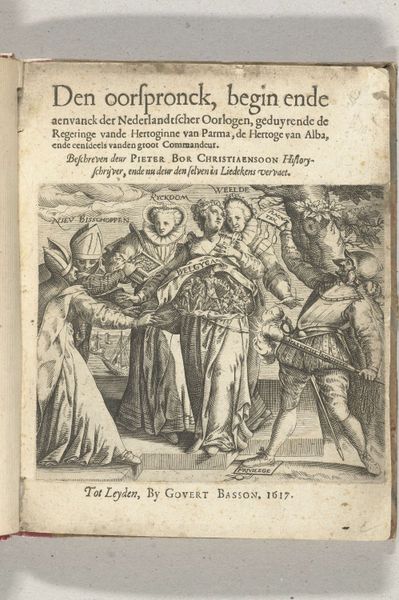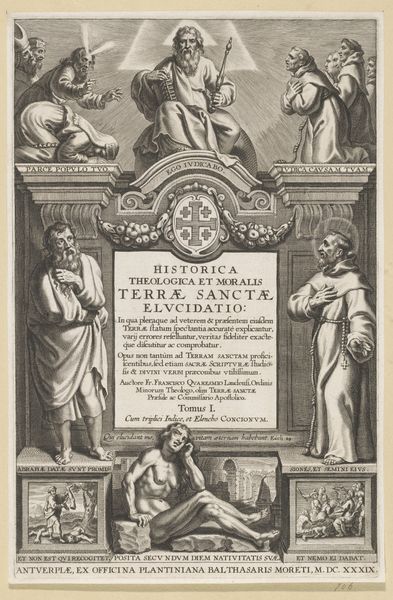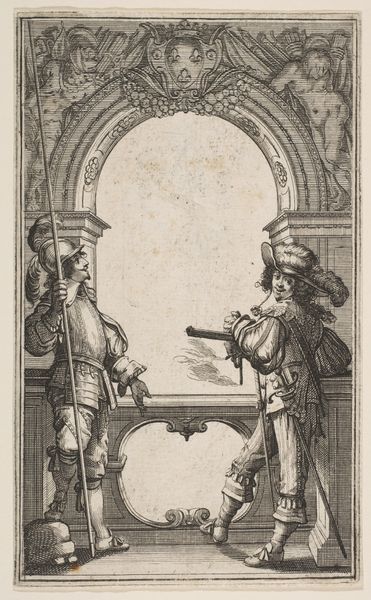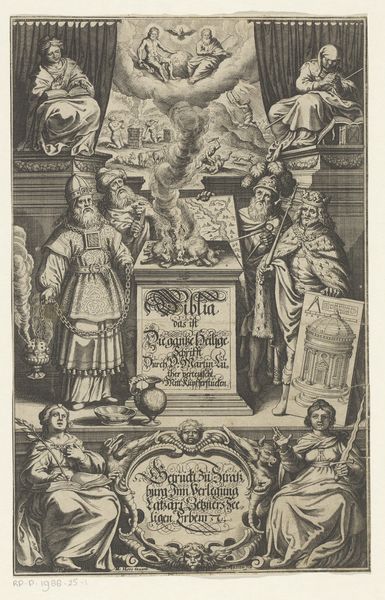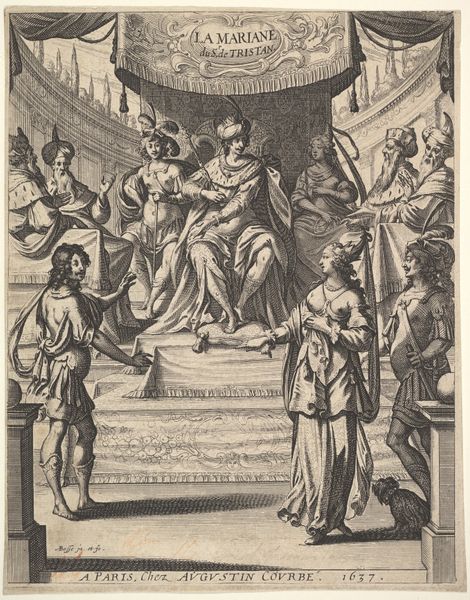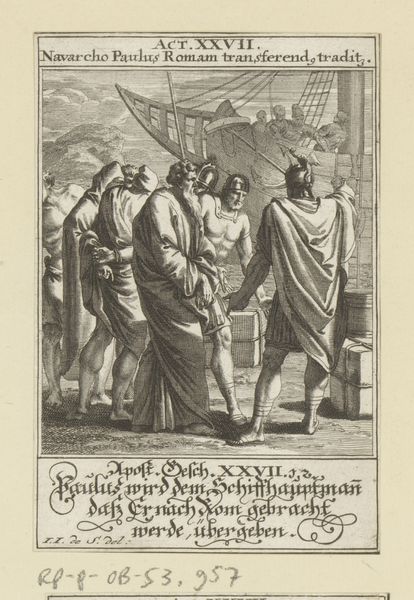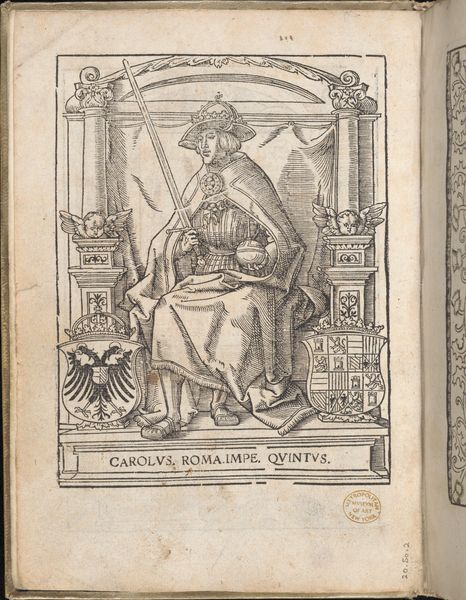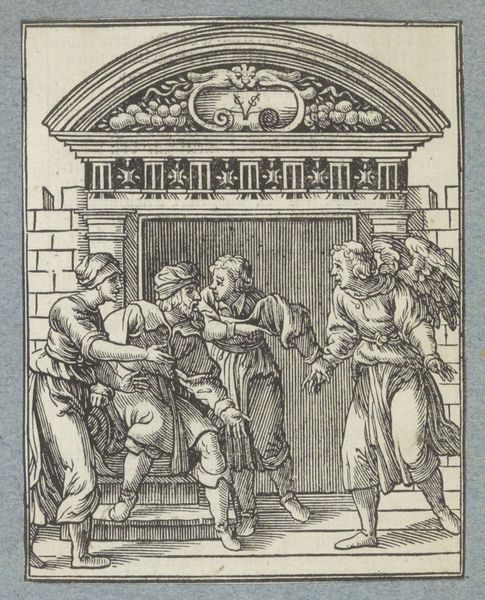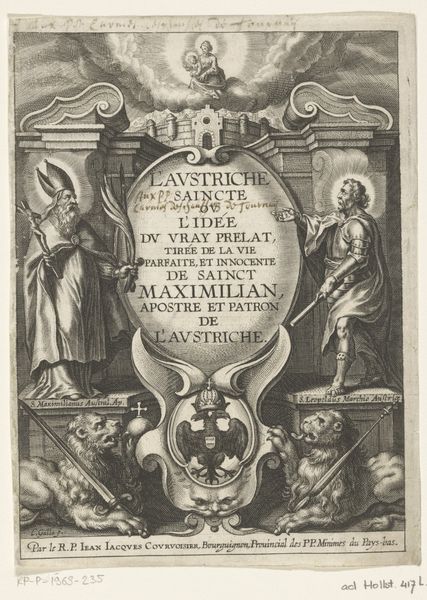
The Three Jewish Heroes (Die Drei Guten Juden), from Heroes and Heroines 1516
0:00
0:00
drawing, print, woodcut, graphite, engraving
#
drawing
# print
#
pen illustration
#
woodcut
#
graphite
#
history-painting
#
northern-renaissance
#
engraving
Dimensions: Sheet: 12 5/8 × 8 7/16 in. (32 × 21.5 cm)
Copyright: Public Domain
Curator: Here we have Hans Burgkmair’s "The Three Jewish Heroes," a woodcut from 1516, now residing at the Metropolitan Museum. It portrays Joshua, David, and Judah Maccabee. Editor: It's striking how densely packed the composition is! The level of detail the artist achieved using, what appears to be, a simple engraving technique creates a sense of opulent seriousness. It certainly grabs the eye. Curator: Opulent is an interesting descriptor, and fitting for Burgkmair's style. It's worth noting the historical context; the piece emerges from the Northern Renaissance where printmaking was experiencing enormous innovation, democratizing images. How do you think that technological leap plays out here? Editor: Well, you see how he elevates these figures to an almost idealized status, imbuing them with characteristics admired in his culture? The sharp lines, meticulously cut into the block, lend an almost architectural permanence to what would've been otherwise intangible. The print transforms cultural values into accessible artifacts. It allowed broader distribution, shaping perceptions of Jewish heroes across different audiences. Curator: Precisely! The use of the woodcut medium speaks volumes. It was an effective, efficient mode of image production meant for multiple reproductions, facilitating not just wider visibility but a visual vocabulary on Jewish subjects circulated en masse through 16th-century society. Did this process in fact solidify their role as revered heroes and exemplars of religious strength in ways other forms couldn't? It raises fascinating questions about art and its effect on politics of identity. Editor: It is important to consider also how Burgkmair, a German artist, positioned these figures within his contemporary socio-political milieu, appropriating the classicized framework that, although presented within a Biblical canon, simultaneously nods towards contemporary audiences through their modes of presentation, costume and surrounding architecture. Curator: A fantastic point. The choice of attire and how they mirror the fashionable tastes in certain sectors of European societies underscores the negotiation between antique virtue and localized aesthetic values which ultimately played an instrumental part within establishing their iconic value beyond textual recounts during this specific timeframe within our recorded histories. Editor: Indeed. Examining the woodcut process itself reveals how the making and circulation of "The Three Jewish Heroes" influenced social narratives far beyond its initial religious scope. Curator: So, to conclude, it isn't just the artistic merit or historical theme, but how materials, manufacturing processes, distribution, accessibilities that profoundly influenced how this iconography impacted those societies for generations onward… Editor: ... And also how they perceived them. This process is indeed more thought-provoking as we begin uncovering the interwoven layers relating human creation intersecting sociocultural awareness throughout its complete existence over that certain epoch until today itself.
Comments
No comments
Be the first to comment and join the conversation on the ultimate creative platform.
